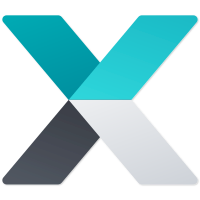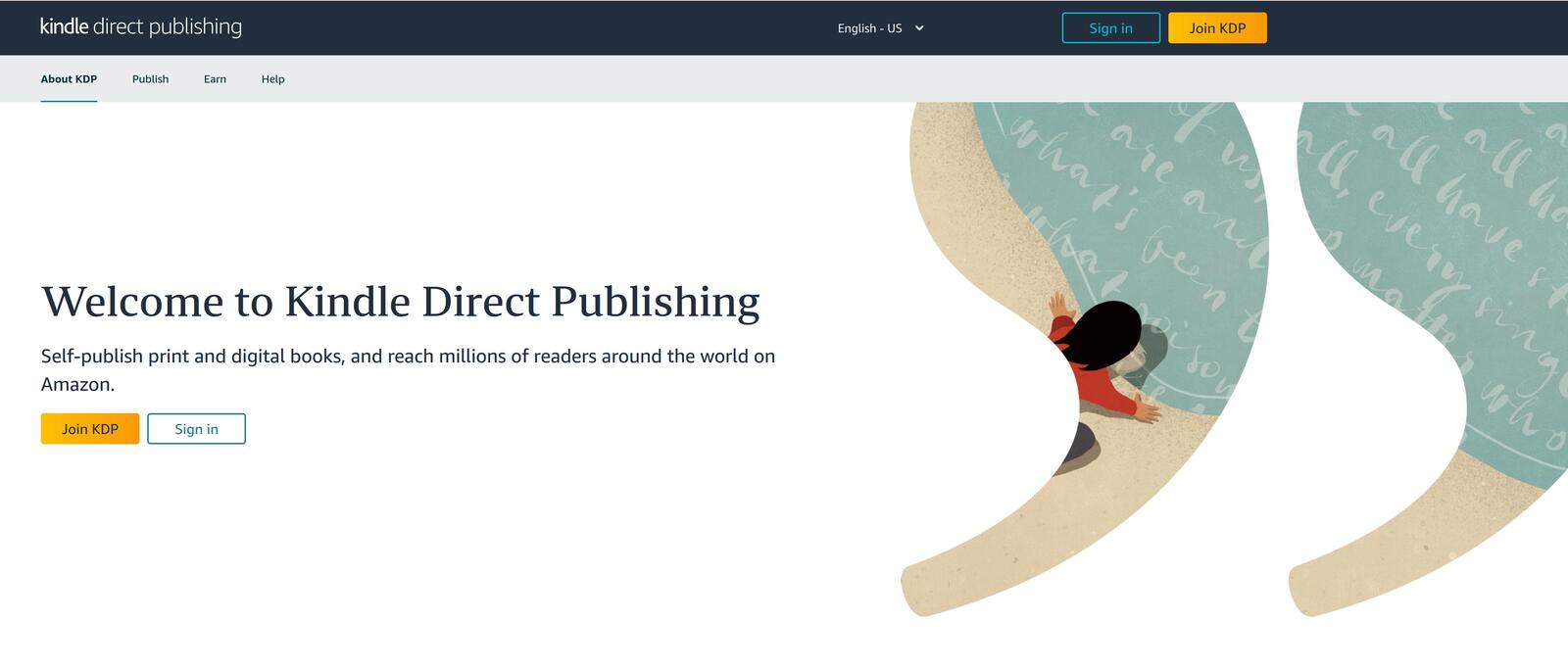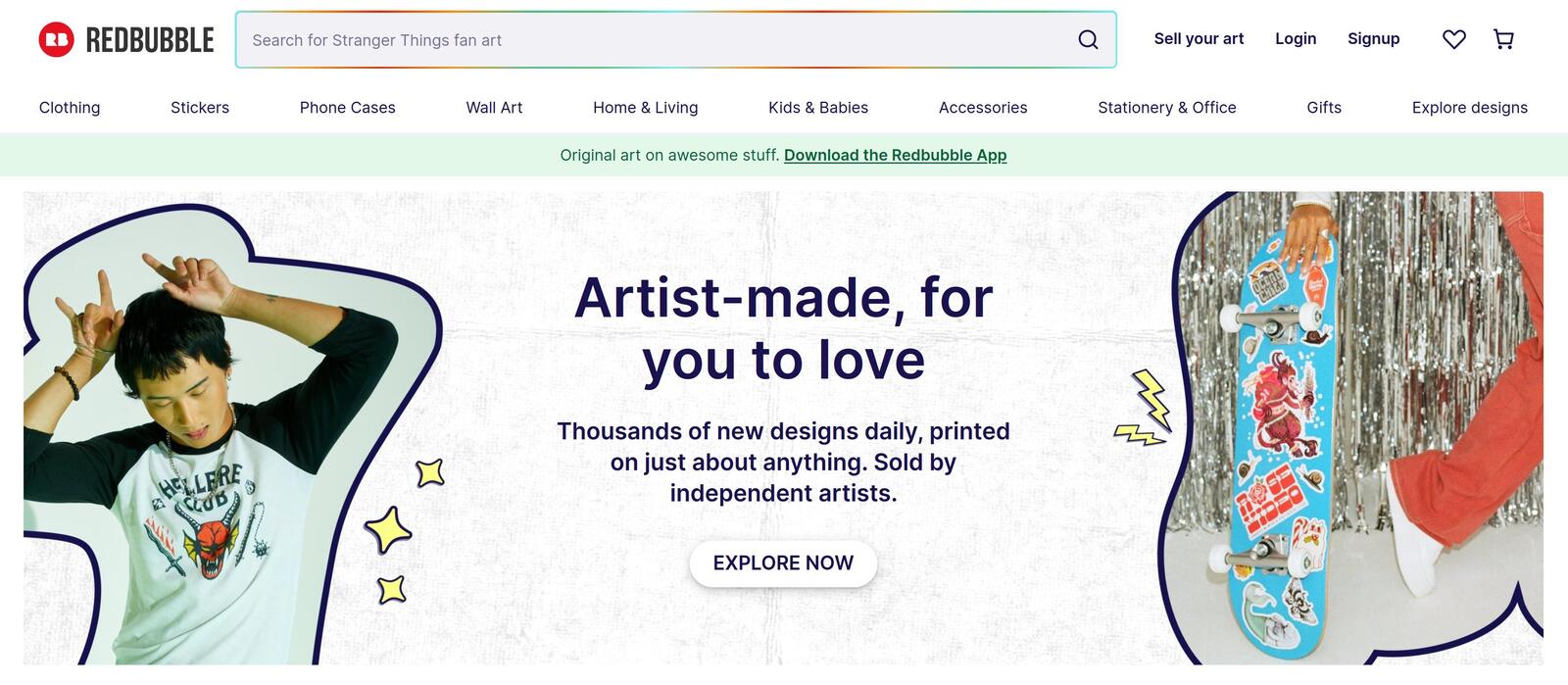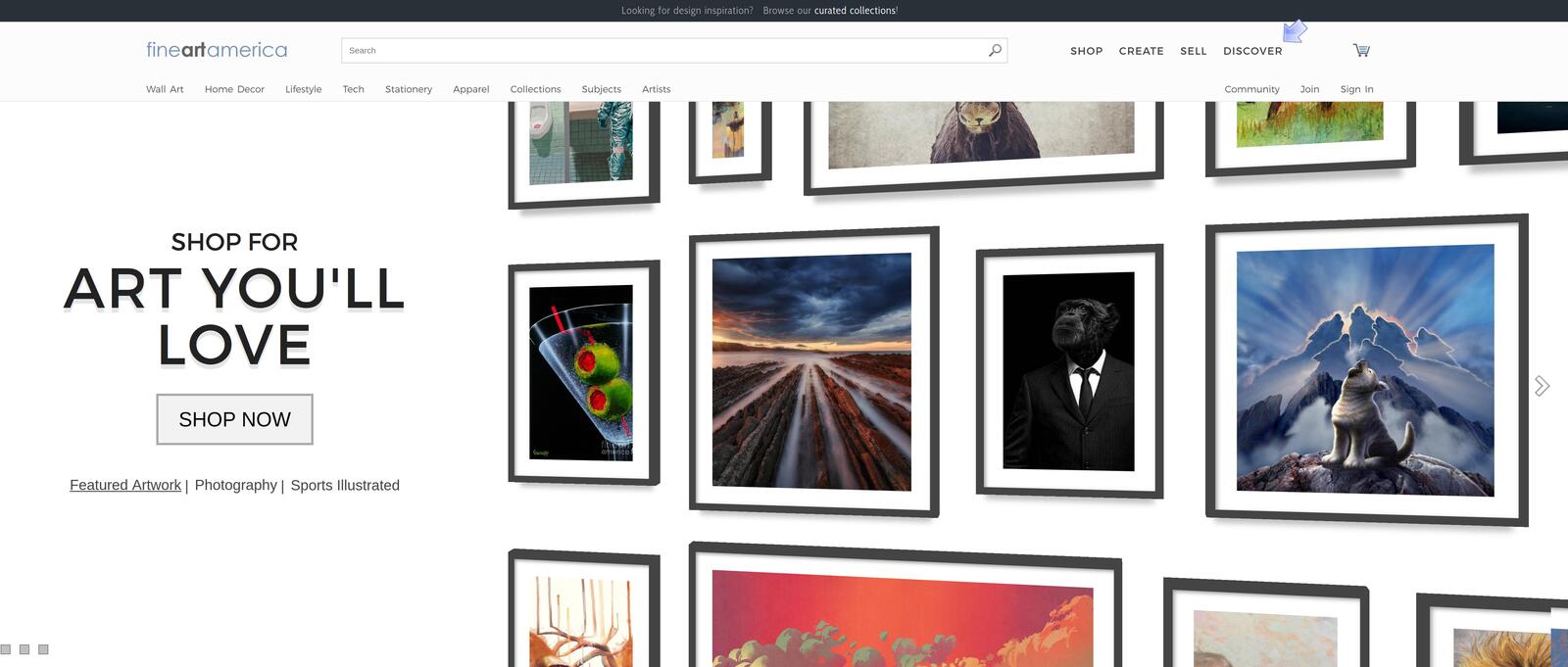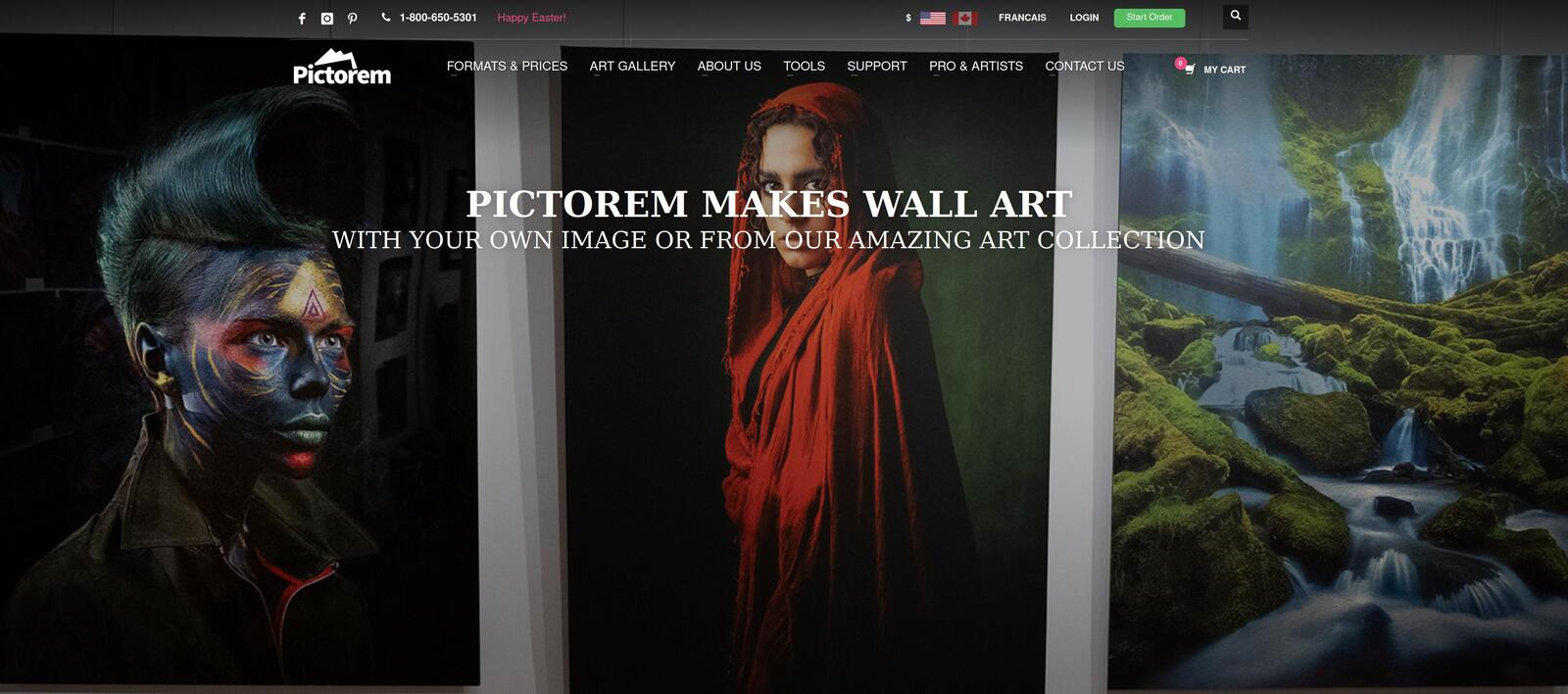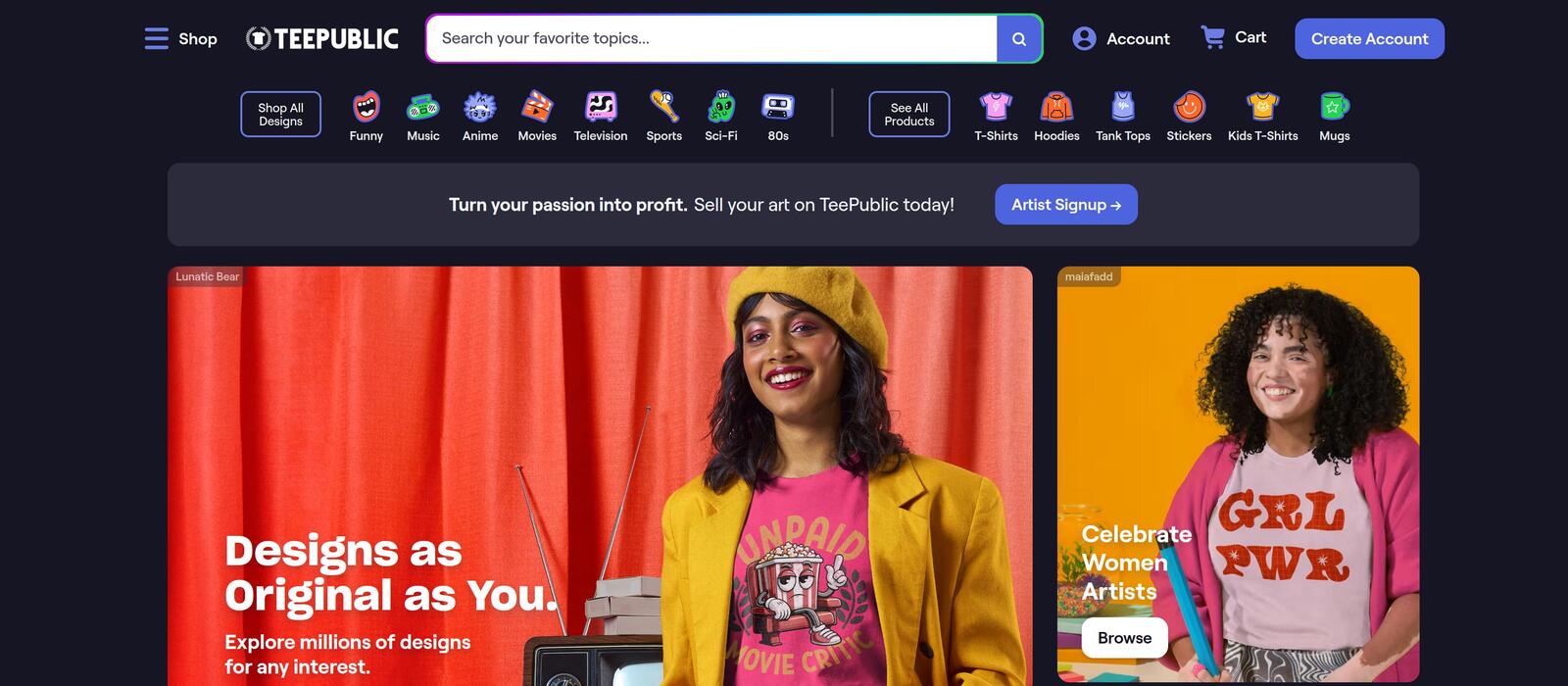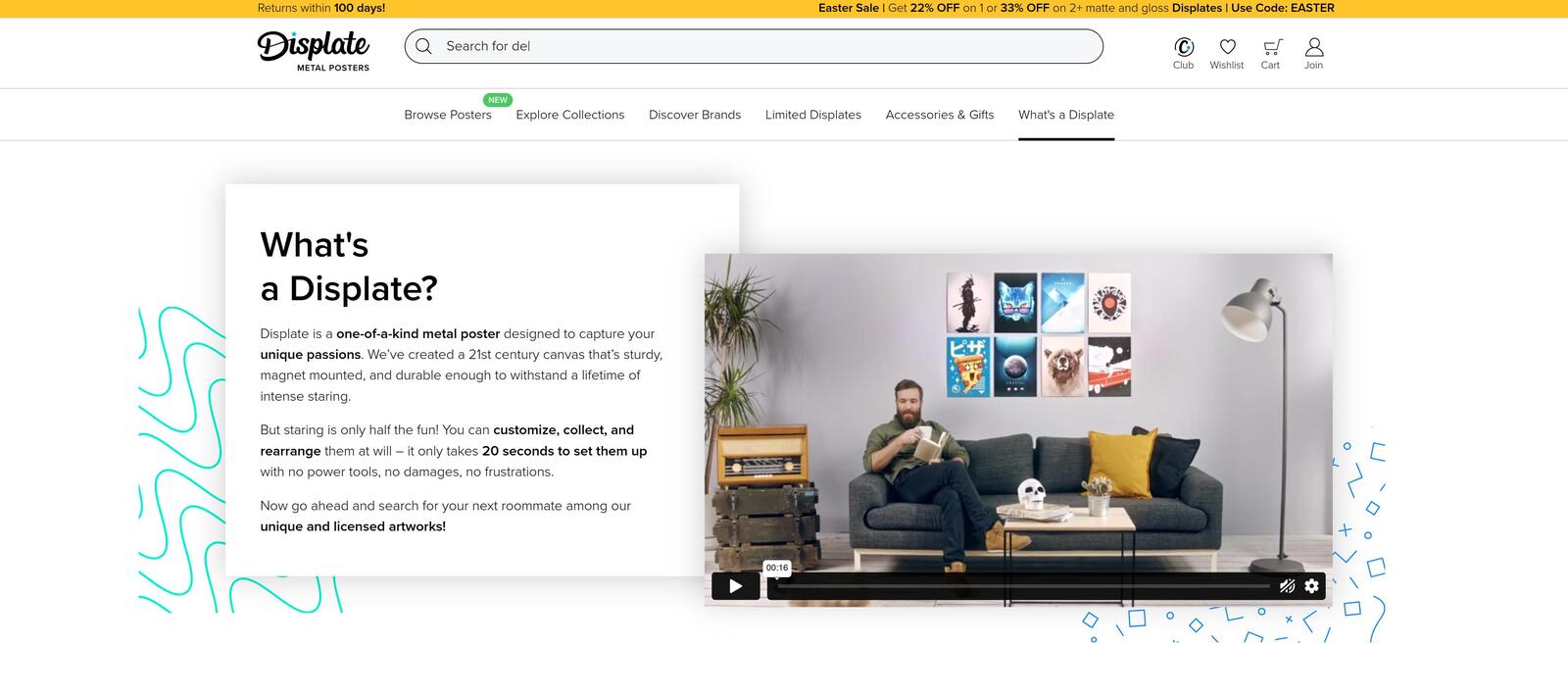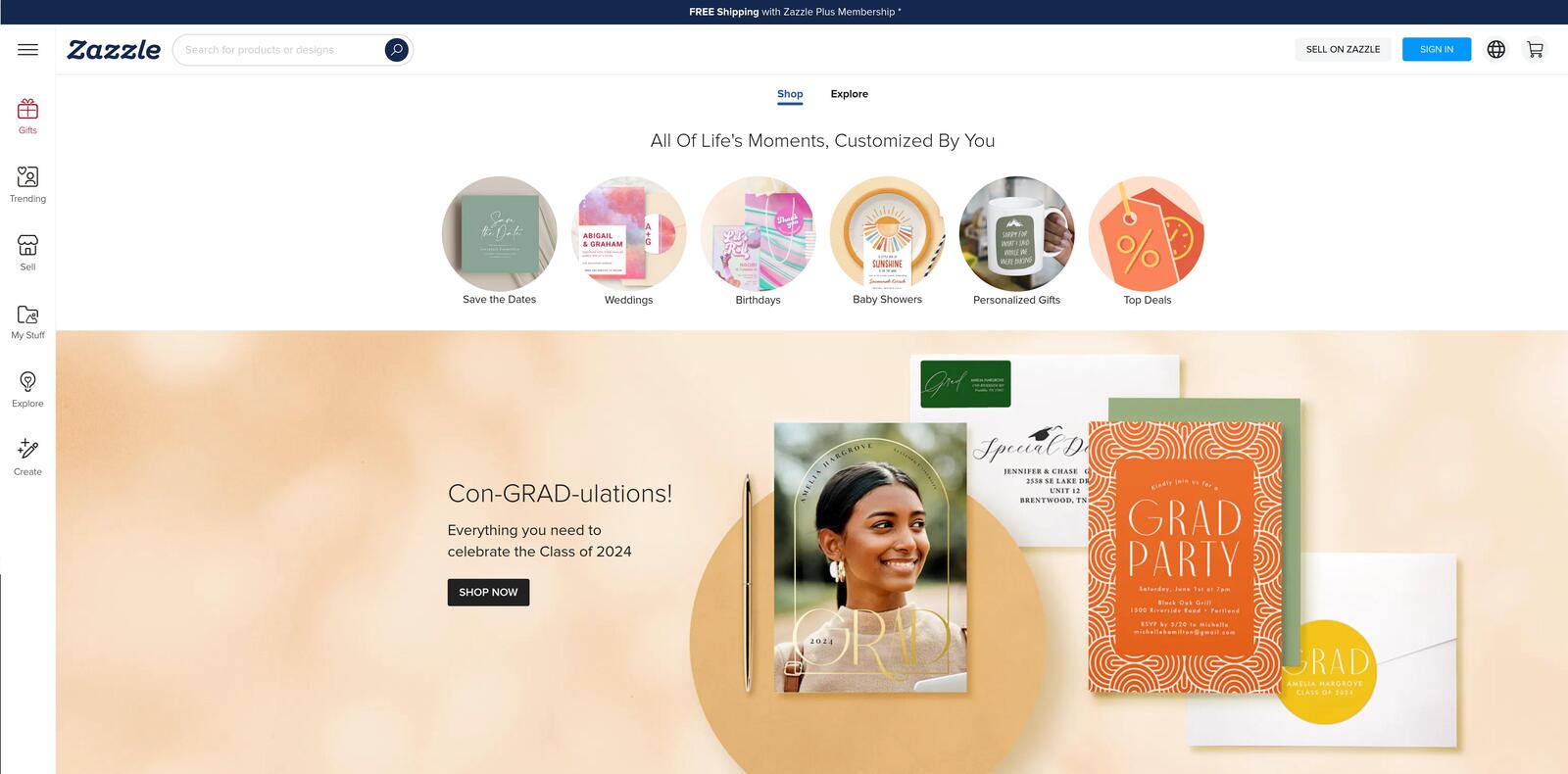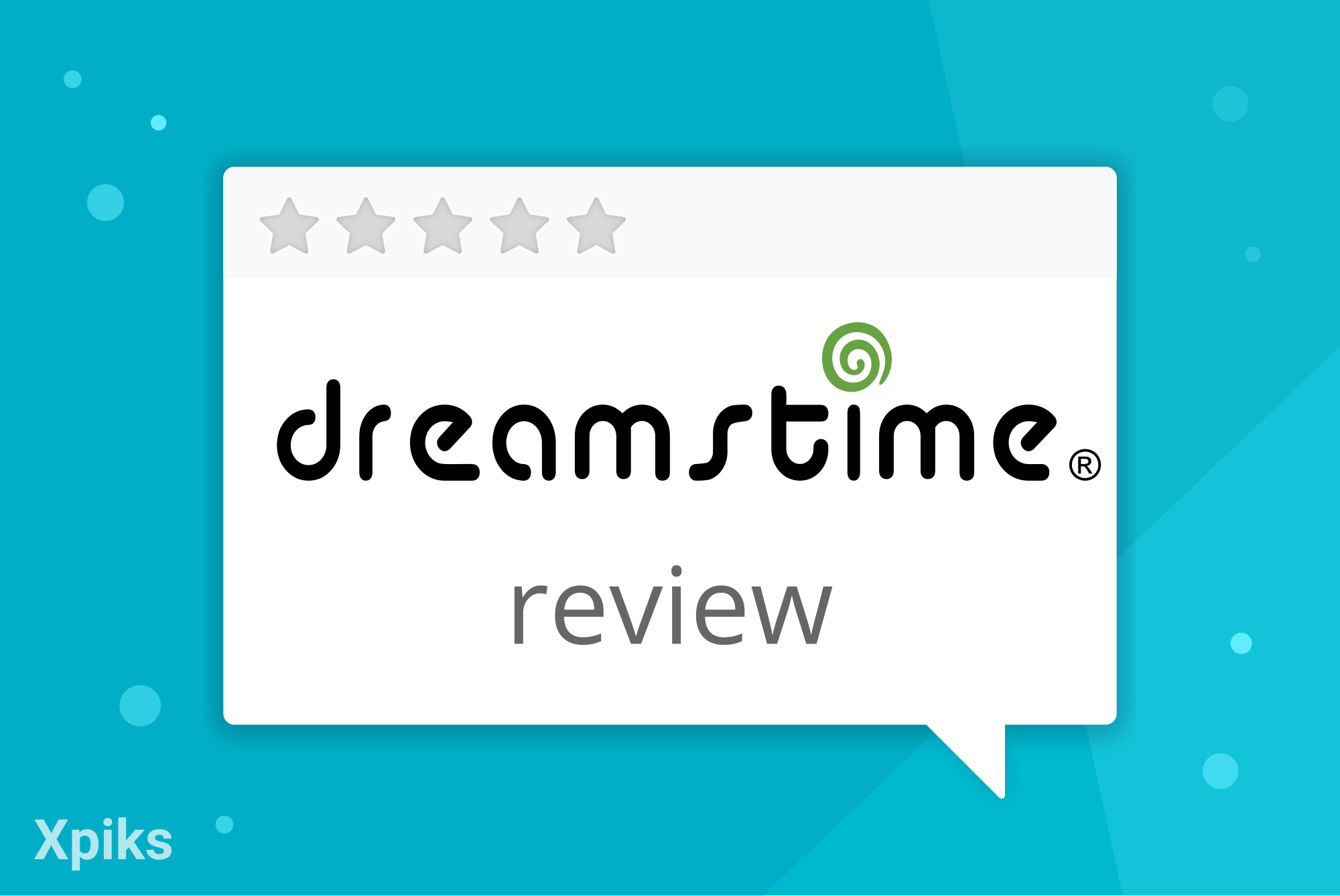Microstock illustrators, graphic designers, and, partially, photographers have one additional way to earn on the same artwork. And this way is called Print-on-Demand (or PoD short). Basically, it lets you create your own designs for stuff like T-shirts, mugs, or books and only prints them when someone orders. You don’t need to keep stock or guess how many you’ll sell - the PoD marketplace is doing this for you (and taking their cut!). As you might have guessed, this industry is very similar to microstocks and shares the same bonuses (passive income) and some of the same problems (competition, theft). In this blogpost you will learn what are the best places to start this journey well.
Amazon Merch on Demand
If you never explored PoD marketplaces, you might probably be surprised to find Amazon here too, rightfully so! Founded in 2015, they are not only one of the many marketplaces. Now it’s one of the most popular ones. One which is the hardest to get to as well. However, once you get approved, you gain access to the vast Amazon monopoly customer base and you can start uploading your designs and choose a range of products it can be used on. Royalties though vary greatly from product to product and from country to country. The typical range is from around 10% to around 25%, however there’re outliers like 3% in Japan for the tiniest of the sizes. The range of products they sell is decent: most popular items like T-shirts, sweatshirts, bags, and phone cases are covered. Keep in mind that because of the benefits, this also comes with a huge competition so you better have some good designs to sell.
Register at Amazon Merch on Demand
Amazon Kindle Direct Publishing
You can sell your designs as book covers, but there’s a twist: you need to sell the actual books! The trick, though, is that the “book” category includes coloring books, journals, notebooks, activity books etc. All of these can be created by you sometimes in as simple a tool as Paint Canva. Royalties will be 35% or 70%, depending on a country, the book price ($3-10 range) and if you opt to cover the delivery fee. There are tons of ways to make it harder to calculate, including KDP Select program so you can check the linked helpdesk topic. The important part for an artist is that you will be creating these products yourself (unlike, say, Redbubble, where you only upload a picture). Registration is subject to the approval process, just like with the Amazon Merch.
Shopify
Shopify, another giant of the retail industry, is also offering a Print-on-Demand marketplace. The main question here is the fees that range from 10% to 25% plus the Shopify shop fee (which starts at $30 and goes all the way to infinity). Shopify offers a great, professional, working platform to the contrary of almost all other siblings here, sans Amazon. Tons of integrations and possibilities. If you’re going really big, this might be the way for you.
Additionally, there’re a lot of plugins to Shopify that integrate your “usual” Shopify shop with Print On Demand manufacturer (similar to Etsy option below). A few notable ones are Sellfy which has high, though fixed commissions and Printify which also offers Etsy integration.
Redbubble
Redbubble is one of the oldest marketplaces, founded back in 2006 in Australia. Besides being the oldest, it is certainly one of the biggest ones too. One unique feature of Redbubble worth mentioning is that artist can set their own royalty percentage (known as “Artist Margin” in Redbubble), something that is virtually impossible to find in its direct competitors. Additionally, your account is subject to a fee, depending on the total earnings amount and the history of sales, as your account is moving through Standard, Premium, and Pro tiers.
Redbubble sells a really high variety of merchandise - close to a hundred different ones - from Stickers and Clothing to Stationery and Wall Art so this is beneficial in terms of reach. Redbubble is quite easy to use and another side benefit - it’s pages rank well in Google, where your potential shoppers search. Because of these pros, the competition there is quite tough so your work has to be of really good quality and target a small audience, if you want to be successful.
Fine Art America
Fine Art America (FAA in short) is a marketplace for photographers to sell their pictures as mostly prints (e.g. wall art), but also puzzles, T-shirts, and others. Fine Art America handles the printing, framing (if applicable), packaging, and shipping. They are more tailored to “art” (it’s in their name anyway!) as they offer prints on a vast variety of mediums such as canvas, metal, acrylic, and wood. They allow artists to set their own prices too, which is valuable. FAA adds 30% to the price that you have set. Not many people know that you can also sell your stock photos there as digital downloads, however, this isn’t a place where such business will likely flourish.
If you’re curious to learn more, you can check out Steve Heap’s blogpost where he analyzes FAA earnings in depth.
Pictorem
Pictorem is the “Fine Art America Canada” for selling “better” prints (unlike, say, Redbubble-like quality), founded in 2014 in Montreal, Canada. Their distinct feature is the “free” shipping in US and Canada. Commission-wise it works similarly to FAA where you set your own prices and they add their cut on top of what you set. The amount of this “cut” depends on the purchase as it includes printing and shipping margins (it’s “free” because it’s included in the price). The good thing is that they don’t have a minimum payout threshold for PayPal payments so you’re not locked in.
TeePublic
TeePublic is a younger version of Redbubble, founded in 2013. They are selling, as you might have guessed, primarily T-shirts, but also cups, stickers, and phone cases. Their commissions vary depending on the size of the product but also on the account type of the artist. Currently, they differentiate “Artisan” and “Apprentice” accounts that differ in the quality of the designs.
TeePublic provides different tools for artists to customize their shop, promote their designs on social media and they still host a forum for contributors.
Etsy + Partners
Etsy is focused on selling handmade products, but recently they have opened a possibility to sell items that will be manufactured by somebody else. In the case of Print-on-Demand, someone else will be the producer of merch. So, as you might guess, the question is about fees as now you will have 2 middlemen between you as a customer: Etsy marketplace and another manufacturing service. In addition to the fee of the manufacturing provider, Etsy will be taking 6.5% of the transaction cost, 15% off-site advertising fee (if applicable) and a couple of one-time fixed fees (like the $10 registration fee). The upside, though, is that your work will be advertised to a (possibly) larger audience than otherwise.
Some partners you can use:
- Fine Art America
- Redbubble
- Zazzle
- Printify (not reviewed here)
- Printful (not reviewed here)
- many, many more
Note that often these partners also integrate with eBay, Squarespace, Walmart and others. Another good article to recommend on Steve Heap’s blog if you’re interested to learn how he set up Etsy with FAA.
Displate
Displate is a more niche PoD platform for creating metal posters. Just like Amazon Merch, registration is subject to a review where you need to have a portfolio online. Artist commission on Displate is only about 7% of the sale price (there’s an interesting thread on Reddit to see about this). Displate also has a minimum payout fee in the size of $50. So it’s a pretty tough place to earn, but due to it being a very niche, it can be good for you. Other than that, it’s a professional service with a usable and easy interface.
Zazzle
Zazzle is the runner-up to Redbubble, created back in 2005. Although Zazzle sells a wide variety of products, they somehow target more celebrations of different sorts, like weddings, baby showers, birthdays etc. It used to be famously printing postage stamps, however this deal is now over. The minimum payout amount at this moment is $35 and Zazzle’s commission rate is 15%, which is somewhat lower than other marketplaces. However, the price for that is the stigma that comes with controversies over selling stolen designs on Zazzle (as on almost all PoD marketplaces). Users also report complex or not always-working website.
